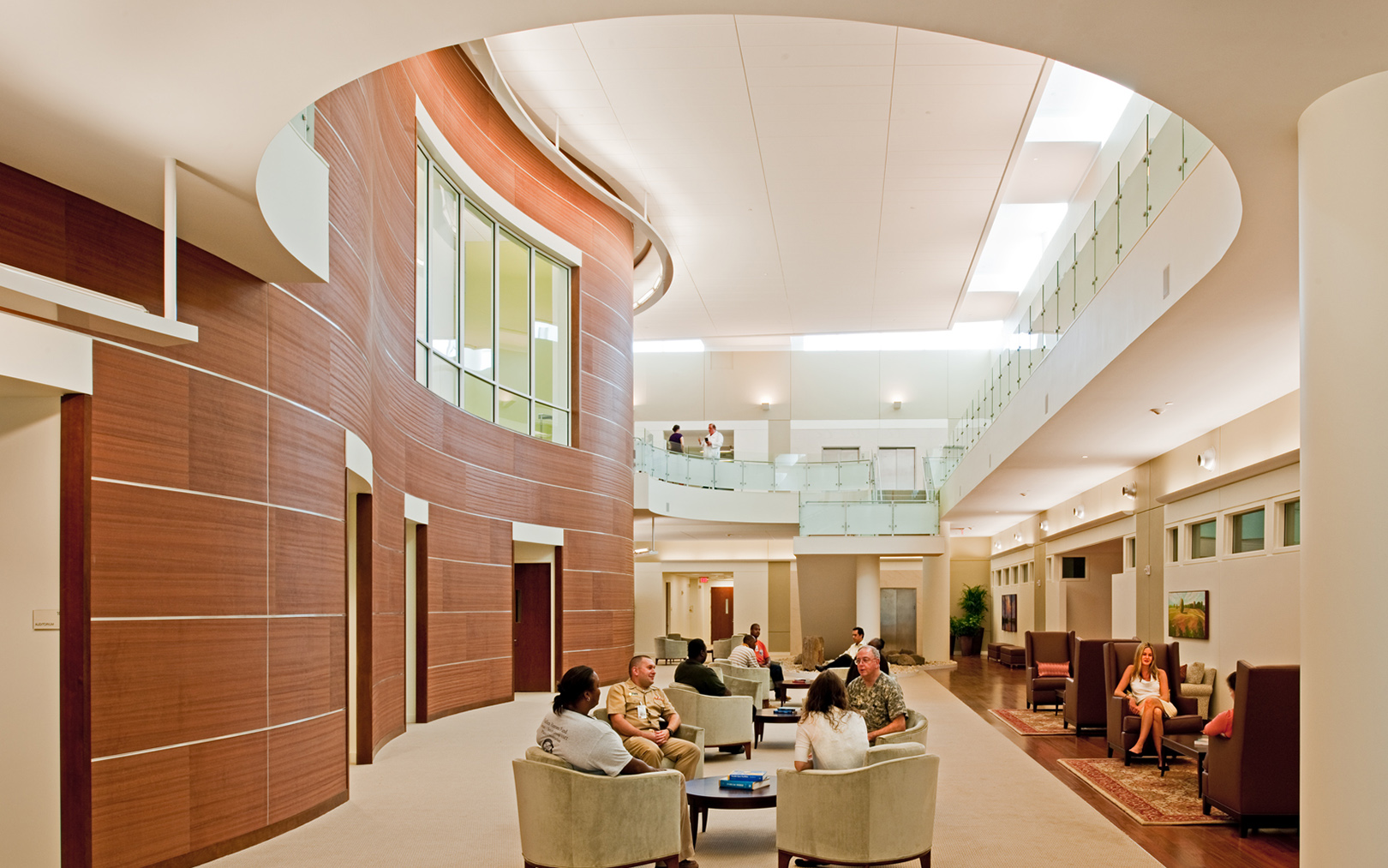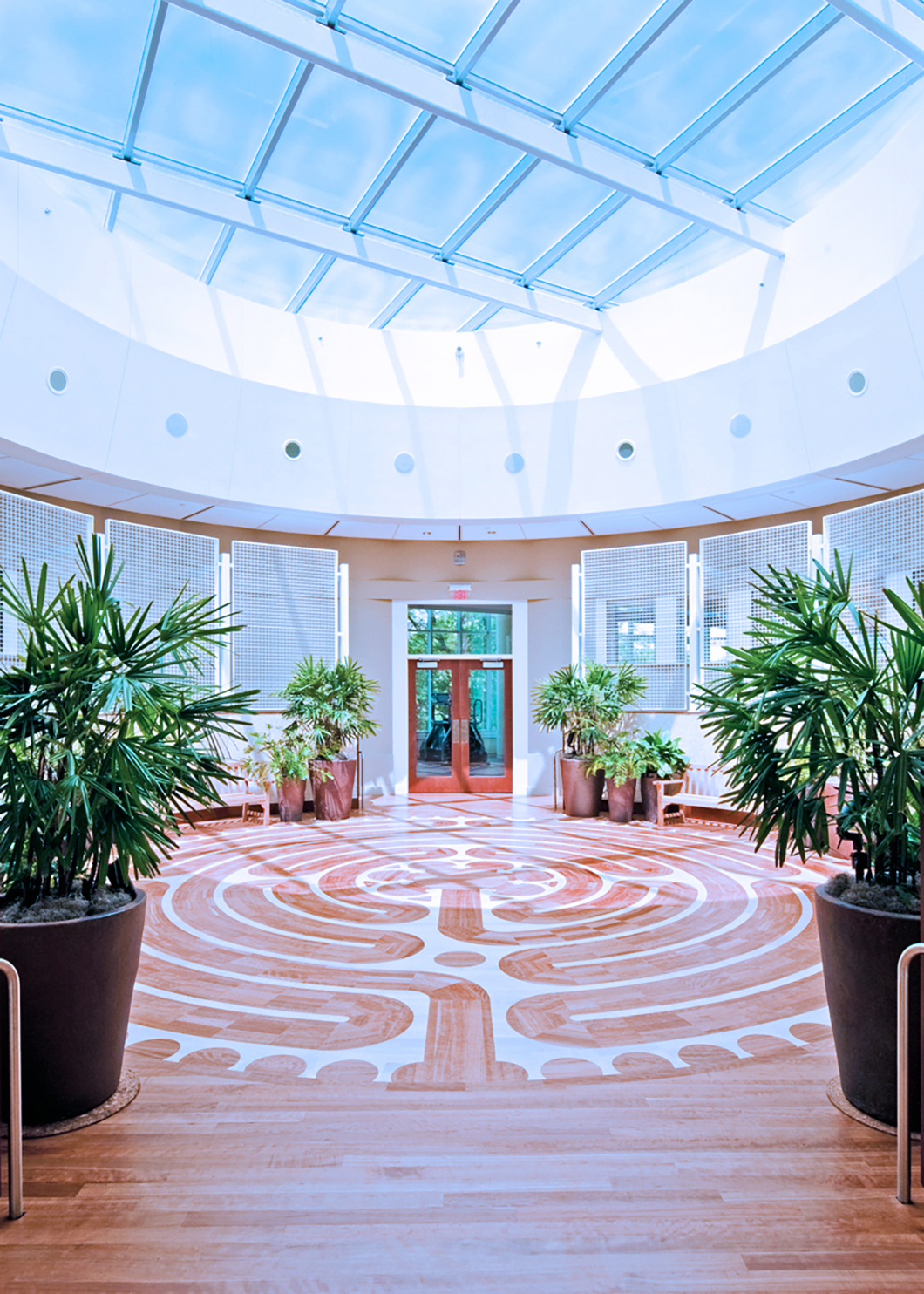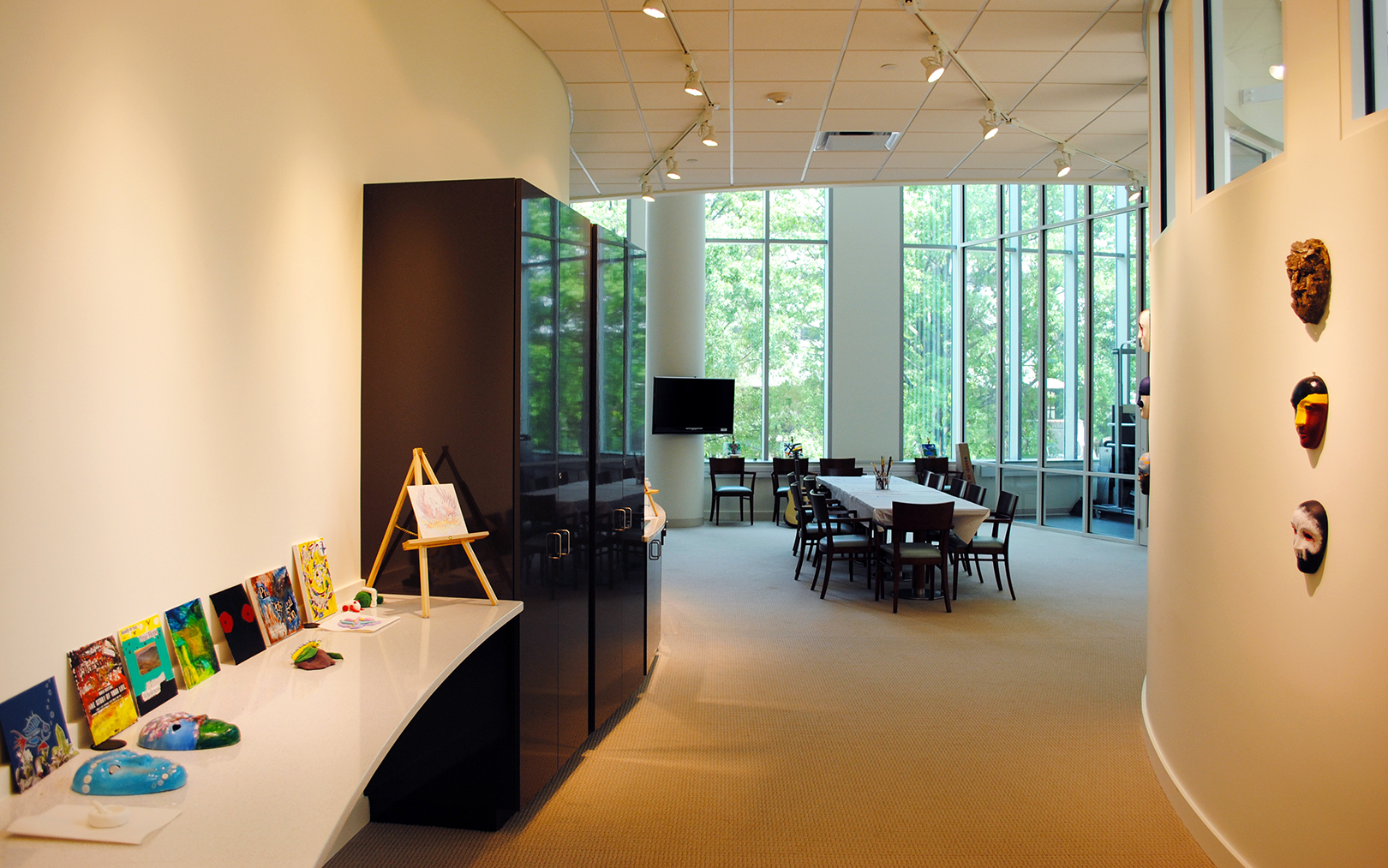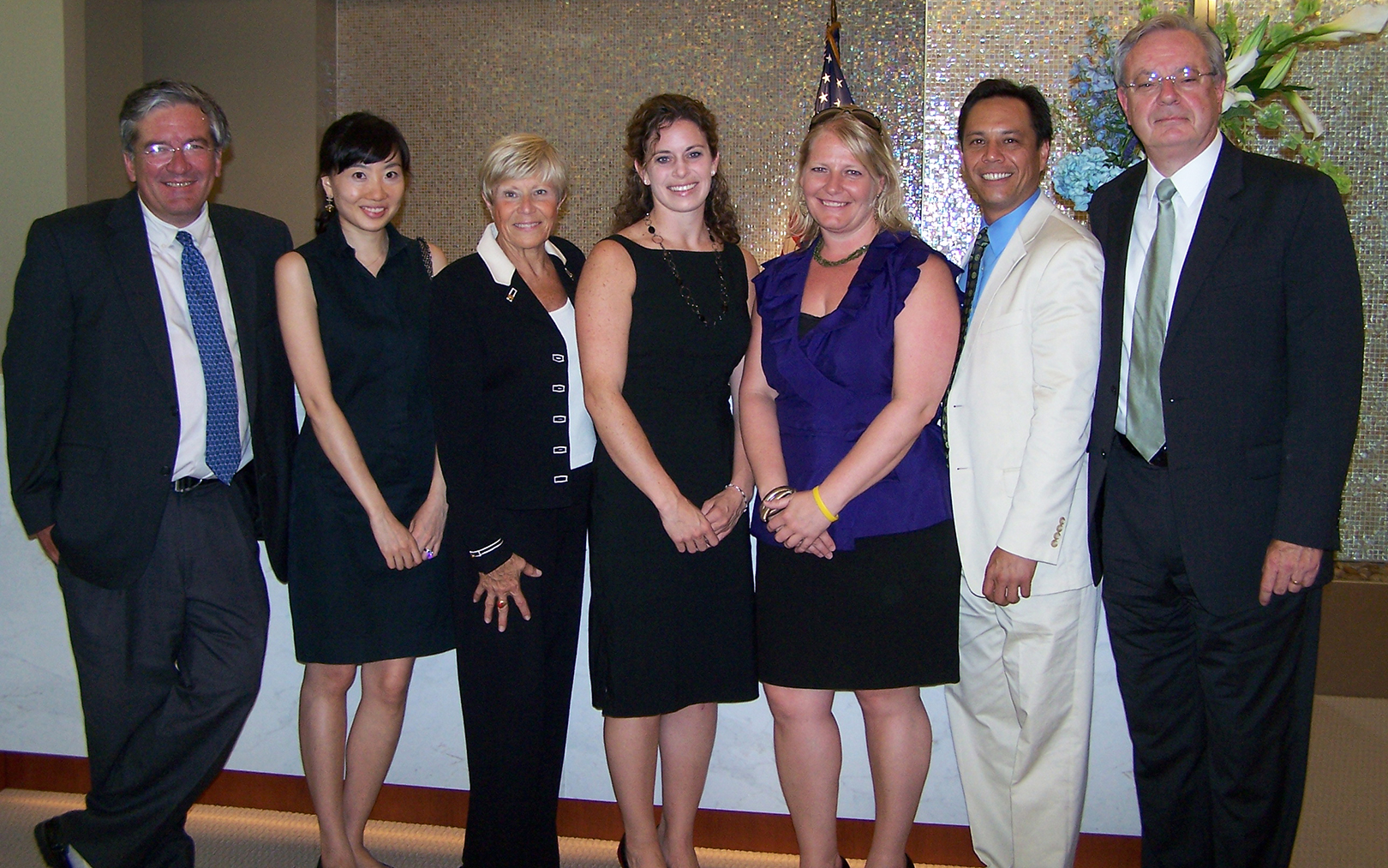Celebrating Ten Years of Innovative Care for TBI Patients
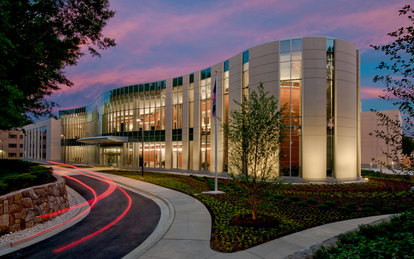
June 24, 2020, marked the 10th anniversary of the opening of the National Intrepid Center of Excellence (NICoE), located at the Walter Reed National Military Medical Center (NNMC) in Bethesda, Maryland.
The NICoE accommodates TBI treatment and research programs which are not available anywhere else in the world. TBI, or traumatic brain injury, has become so common that it is considered the signature 'invisible wound' of today’s wars. It is characterized by many long-term and debilitating symptoms, including memory loss; difficulty with planning, reasoning, or judgment; problems with balance or motor skills; sensory loss or disturbances; dizziness, headaches and fatigue; sleep disturbances; and seizures. TBI patients may also experience emotional and behavioral problems, and many service members with TBI also suffer from post-traumatic stress disorder.
To address this growing challenge, the NICoE facility, commissioned and funded by the Intrepid Fallen Heroes Fund, was designed and constructed in just 22 months. Today, it serves as a leader in advancing world-class psychological health and TBI treatment, research and education, creating an entirely new model of care. The NICoE also supports continued innovation and technological advances in military medicine and serves as the prototype for future military and civilian TBI centers worldwide, including a new network of satellite clinics, Intrepid Spirit Centers, that are being built on military bases across the U.S.
In celebration of this important milestone, healthcare studio leader Brenna Costello, who was a vital member of the SmithGroup team that planned and designed the NICoE, interviews Dr. James Kelly, the director of NICoE for its first seven years. Today, Dr. Kelly is the executive director of the Marcus Institute for Brain Health in Aurora, Colorado, and co-founder of the Avalon Fund, a non-profit organization that seeks to create the first nationwide, integrative TBI and PTSD treatment network by 2023.
Brenna Costello: The experience of working together with you on the NICoE was so unique and unforgettable. With no precedent building to draw from, we had to develop the vision, the concept of operations, and the design in parallel. Looking back, what are some of the attributes that you think helped create this one-of-a-kind facility?
Dr. James Kelly: There are several that come to mind. At the very highest level, this is the first freestanding building dedicated to this purpose. And for a patient and family member as well as researchers and clinicians, that really is an important feature. It's not a clinic in a building with many other clinics, it's actually a dedicated place for these individuals. And then when you see it, you recognize that it's different than the other places you might see on a medical campus. When you enter the building, there is a sense of elegance and calming, a peacefulness, that was deliberately designed into it. That is immediately obvious to those who come to it.
BC: I think the most rewarding feedback that we heard was from a patient, who said, "When I walk into this building, I feel cared for." That has stayed with our team and with me ever since. It just makes what we do so much more rewarding, knowing that there's a mission behind it.
Kelly: That's exactly right, and many people said that in one fashion or another: somebody's taking me seriously, because this is a really serious place. These are people who have a complex combination of bodily pain, cognitive impairments, dysfunction in their jobs and their memories, their sleep and their relationships, and the emotional impacts that come with these challenges. You can't go to five different clinics and make the progress needed. But you can go to NICoE and have everything addressed at once.
When we first opened, patients were initially feeling they didn't deserve this beautiful facility. The military are characteristically humble, and many felt unworthy of the quality of the center, with really top-notch surroundings and the attention that they receive there. They commonly felt awkward at first. These are also people that are tough as nails, and there was at one time a stigma associated with wounds that weren't immediately visible—that because they weren't real injuries they were reluctant to seek treatment. Eventually, over time, people began to say, NICoE is where you go to heal. Often we hear they go back to their home stations and tell others about their experience at NICoE, and encourage their fellow service members to seek out treatment there. Now, 10 years in, the service members may not even know what the acronym NICoE stands for; it just means that that's where you’ll find help. Just like the beautiful inscription on that marble wall in the entry: A Place to Heal the Invisible Wounds of War.
BC: One of the concerns we repeatedly heard from the patients was the mental and emotional struggle of having to tell their story over and over again: having to repeatedly relive how they were first injured, and the problems it left them with, each time they met with their many caregivers. As you know, creating a special space where the entire care team can meet with the patient and their family when they first arrive at NICoE was a key component of the design. Was this the first time that you had seen a staffing model and a patient intake area like this?
Kelly: Even now, you'll hear from patients that go through the program how important that is. The interdisciplinary team meeting area that you designed on the first floor of the clinic, which puts the patient and family and all of the caregivers together in one room—to hear the patient’s story once—set the tone for trust and collaboration. The patients, of course, had never experienced anything like that, or a building that facilitates that.
And it helps the staff, too—everyone hearing all of the discussion and not just what is pertinent to their clinical discipline. It elevates the interdisciplinary exchange throughout the patient’s treatment because they are all co-located and working together toward the issues of that particular patient. Even before the patient arrives, the multidisciplinary care team meets there to understand the nature of the patient's problems.
That program couldn't exist without the facility design and the co-location idea. That is the secret sauce. That's what makes it work for patients because then you get to maximize their diagnostic assessments, understand in greater detail what the nature of the problem is, and target the treatment holistically rather than focus on a single symptom. You need all of that together to make it work. That unique approach truly mattered in my experience, and it didn’t exist anywhere else.
BC: The comprehensive care model at NICoE is first-of-its-kind and greatly influenced the building’s design. What was it like creating something that new and unique?
Kelly: We had the opportunity to just think more broadly about the NICoE, rather than force-fit something into an existing system, or the way most TBI researchers and doctors had been working. For example, at the time we were designing NICoE, there was growing evidence on the benefits of integrating complementary and alternative methods with traditional clinical care. There was some resistance at the early stage because it was so different, so new, and in many ways, untested. Very little research had been done in concussion care, particularly using those techniques.
But the effectiveness quickly became obvious; we didn't have to convince people because the patients convinced them. They were coming off medications they no longer needed. They had fewer side effects. They were feeling better, and they were able to manage their own psychological issues and triggers. They managed personal interactions differently. It was these new techniques complementing their face-to-face counseling and neurological care—mindfulness training, yoga, the labyrinth we included in the facility—that were benefitting them. These were also learned skills they could take home with them and utilize in their daily lives. . . and that was huge.
BC: Were any other new treatment approaches developed at NICoE?
The art therapy developed by Melissa Walker was another early example of how NICoE was different. Melissa created a technique that helps patients learn to express themselves after this neurological insult, after something that had changed them as a person. First, through a medium that let's them depict, non-verbally, their internal struggles and turmoil on a blank mask or canvas. Then they learn how to put that into words and understand it better, so that they can face it and deal with it.
It was brilliant. I had never seen it used in that way, and it continues to be such a huge success. Funding from the National Endowment for the Arts has allowed Melissa to disseminate this therapy model to others. There are now art therapy programs at military bases and Veterans Affairs facilities nationwide, and we are also doing it at the Marcus Institute. It’s just one of the alternative medicine approaches that helps people with these invisible wound issues that have had a sweeping influence well beyond NICoE.
BC: What were some of the technological innovations implemented, at the start or over its ten years, that has made the treatment at NICoE so successful?
Kelly: Well, for one, the imaging suite. To my knowledge, there is still nowhere that has those brain imaging technologies (3T fMRI, MEG, PET/CT) available in a suite like that. Imaging a patient’s brain anatomically and functionally, alongside rigorous clinical exams and metrics, was a stunning leap forward. The ease with which it can be done, because of the proximity of one to the next, was a huge difference right away. From the moment we opened, it started to add to our understanding and the literature on traumatic brain injuries; there has been a succession of papers, scientific posters, and presentations at national meetings from the first year NICoE was open.
Another innovation at NICoE is the sleep labs. Sleep is such a tremendous problem in this population, and the two integrated sleep labs with their sleep-trained physicians and technologists continue to be a huge advance.
BC: What about the use of virtual reality in conjunction with the imaging, having those two technologies together under the same roof?
Kelly: Implementing the virtual reality lab at NICoE was an experiment, almost like being a research-oriented start-up. We didn't have a lot of experience in the use of VR technology in rehabilitation, so we partnered with experts as consultants to NICoE. We started sharing information, research, and software between us to help everyone advance together. I think virtual reality in the treatment of TBI is one area of technology that will be a significant advance in the future as people understand it better and put it to use more.
The combined use of visual and auditory stimuli in the CAREN (Computer-Assisted Rehabilitation Environment, a 180-degree simulator designed to immerse patients into virtual settings to address physical rehabilitation as well as post-traumatic stress) is definitely a major advance and will be used successfully at other locations.
BC: Do you feel the environment created at NICoE had an impact on staff and their well-being? Did they have a different attitude coming to work, or feel differently about treating their patients in such a space?
Kelly: The staff experience and how the building is designed was seamless; it doesn’t interfere with what they needed to do but actually complements it. So much of what they need was thought through beforehand—and hardly any staff had that experience before coming to NICoE. NICoE really eliminated all of those little obstacles that aggravate the patient's symptoms, and all the things that make it more difficult for staff.
People told me that they loved coming to work. I would sometimes observe staff leaving at the end of their day, and at times they would be in tears because of a break-through that they had with a patient. Because of the experience of being in that setting, patients started to feel safe, and it was not uncommon that they shared things that they had never told anyone before. The environment allowed them to just shed some stuff. The staff would then have to contend with it, but they got to do things that really help people, and that was hard, often, but was stunningly effective.
BC: What was the moment you realized we had built something special here?
Kelly: I remember the day exactly. It seemed like any other day when I glanced over at the construction site as I entered the main entrance of NNMC for a long day of meetings. While I was engrossed in planning sessions across the street from the site, the signage letters had been installed over the entrance. When I emerged from my meeting, my eyes were drawn to NATIONAL INTREPID CENTER OF EXCELLENCE. I just stood there in silence, captivated. A construction site had suddenly been transformed, brought to life by a name full of hope and promise to become the place of healing we had intended.
